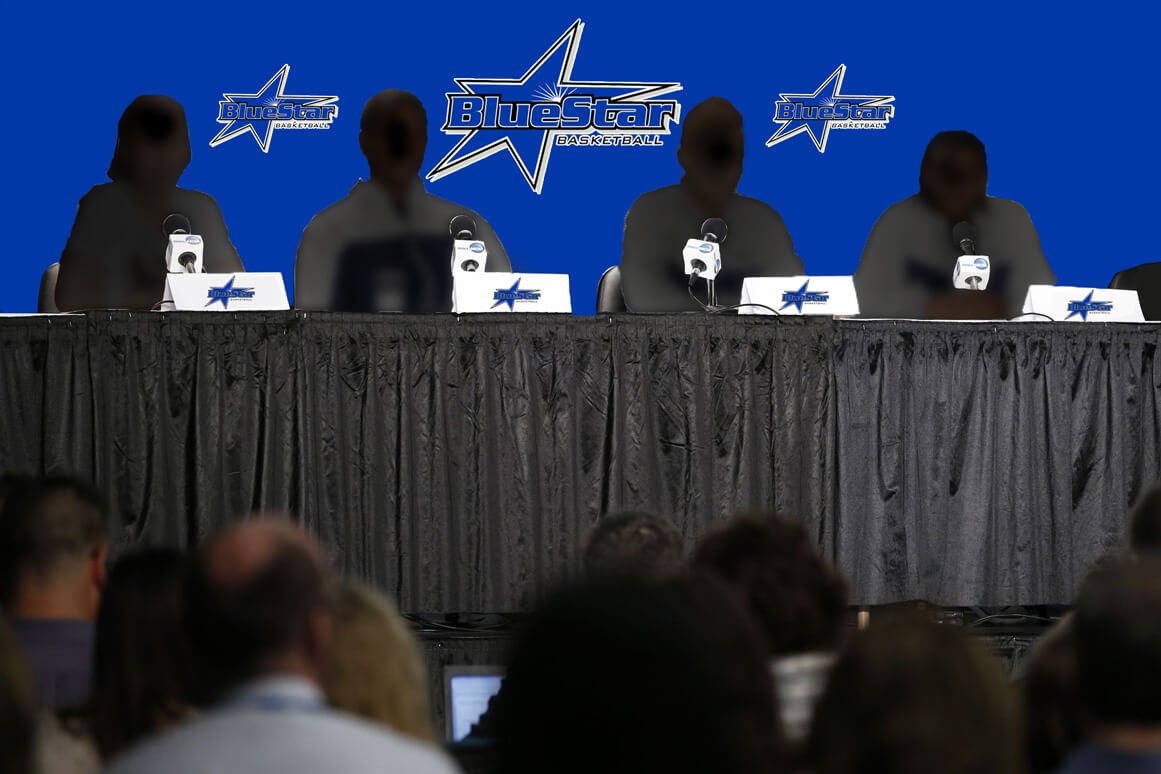
Holly Warlick has taken Tennessee two two Elite 8 appearances, but the Lady Vols are struggling offensively this season. (Photo Credit: Arlene Langer, IDI Sports)
Lord, forgive me for what I am about to write.
I may have to move to another part of the country. Coaches I’ve admired for years may never speak to me again.
I’ve been holding back for a while to make this observation, but I can’t any longer:
Southeastern Conference women’s basketball is really hard to watch, and it has been this way for a while. The last couple week’s worth of games may help explain why.
Since the weekend of Jan. 15, as conference play has revved up, here are the following point totals for Big Ten teams that won their games: 97, 95, 93, 91 (twice), 90 (twice), 84, 82 (twice), 80, 78, 72, 71, 70, 68, 65, 62, 59. Another team scored 93 and 87 points in two separate games, and lost them both.
In the ACC, the winners scored the following points: 92, 91, 90, 80, 79 (twice), 78, 76 (twice), 75, 72 (twice), 71 (3 times), 70, 69 (twice), 66, 65, 58, 54. A loser scored 90 points.
The Big 12 slate had the following winning scores: 97, 92, 83, 80, 79, 77, 74, 73, 72, 69, 65 (twice), 59, 58. A loser scored 84 in a game.
The SEC winning scores went like this: 81, 80, 79 (twice), 74, 73, 71, 67, 64 (3 times) 59, 58, 57, 54, 53 (twice), 48, 47,
Forget Powerball; these are scoring strings that reveal a lot more than who’s playing some of the most crowd-pleasing basketball.
To be fair, the Pac 12 has been comparable to the SEC, with the following winning scores in the last couple of weeks: 80, 77, 75 (twice), 73 (twice), 70, 69 (3 times), 64 (3 times), 63, 62 (twice), 61 (4 times), 60, 59, 58, 57, 56. This may be worthy of a future post, especially with the Pac 12 boasting the best conference RPI in the land.
I’m not trying to pick on a conference that might get seven or more NCAA tournament bids. For all of their offensive woes, SEC teams still feature some of the most elite defenses in the nation. Ten of the 14 teams are giving up fewer than 60 points a game.
High-quality offensive basketball isn’t just a luxury, for UConn and Notre Dame to display for entertainment purposes. They’re not the Globetrotters, although at times it seems like it.
It’s not just what fans and crabby writers and offensive evangelists like Debbie Antonelli want to see.
In this post-Val Ackerman white paper world, it’s not just enough any longer to grind teams down and win ugly. Not the teams that matter.
UConn and Notre Dame have mastered the key offensive categories for a number of years: scoring offense, field goal percentage, points-per-possession, assist-to-basket ratio and more.
They can get scoring from all five positions, and from almost every spot on the floor. It’s no mystery why they’ve met in the NCAA title game the last two years.
In the SEC, only South Carolina—which broke a seven-year SEC Final Four drought last year—appears to be able to do that, in spite of beating Texas A & M with 58 points and Mississippi State with 57. The Gamecocks, who play host to UConn on Feb. 8, aren’t a consistently good 3-point shooting team (32.5) percent. Dawn Staley’s team, however, does have a knack for making clutch plays, even getting a big 3-point shot to go down when it’s needed.
I love what Kentucky is doing with a thin roster after several transfers, especially the guard play of Makayla Epps and Janee Thompson. The Wildcats dug out a turnover-riddled win at Tennessee on Monday, but previously were worn down by South Carolina’s versatility.
I think the world of what Vic Schaefer has done at Mississippi State, which boasts the top scorer in the SEC in sophomore Victoria Vivians (17.7). The Lady Bulldogs set a state record with more than 10,000 in attendance for Sunday’s loss to South Carolina. They play great defense but had a dreadful week, losing 47-43 at Georgia before that. I know this is a young team, but Vivians desperately needs help putting points on the board.
In Gainesville, Florida has real balance offensively but only two players who average in double figures, and they’re barely above 10 points a game. The Gators won at Tennessee but lost to Georgia and managed only 53 points in a win at LSU.
Talented offensive players in the SEC haven’t exactly been strangers, nor are they now. There just isn’t enough firepower to match the proficiency not only of UConn and Notre Dame, but Baylor, Maryland, Texas, Ohio State and other potential Final Four contenders.
As far as parity goes, the SEC is as solid as it’s ever been. Tight races make for dramatic games, and there’s never been a shortage of that in this league.
Florida leads the SEC in scoring at 81.2 points a game, with South Carolina at 75.7, Miss. State 75.6, Kentucky 74.3, Missouri 74.1 and Texas A & M 73.7. Some are mixed in with the those teams mentioned above: UConn 89.8, Ohio State 85.9, Maryland 85.7, Notre Dame 82.3 and Baylor 79.4.
In conference games only, scoring averages for top SEC teams have taken a noticeable drop: South Carolina 71.7, Florida 69.6, Texas A & M 67.8, Tennessee 66. Kentucky and Miss. State are both at 63.3.
What’s happened at Tennessee has drawn growing national scrutiny, as the Lady Vols are really struggling to score. The lack of fluid basketball is painfully obvious. They’re another loss or two from dropping out of the national rankings for the first time since 1985.
The last two weeks have been especially brutal. The Lady Vols collapsed in the second half against Arkansas, couldn’t keep up with Notre Dame’s scoring weapons and wilted under the pressure in a close game against Kentucky. For the season, the Lady Vols are averaging only 66 points a game.
They’ve scored 60 points or less six times, including a record low 43 points in a December home loss to even more lowly Virginia Tech. They fought through those problems in a solid win at Oregon State after a rough loss at Stanford and started off SEC with an encouraging win at Missouri.
Holly Warlick has brought in a few highly-rated prep stars, including current freshman guard Te’a Cooper, and Diamond DeShields is in her first season after transferring from North Carolina.
Only two players on the current roster are seniors, so the future ought to be considered bright. Right? Well, the Lady Vols signed nobody in the fall period. As in zero.
The lack of scoring and new players coming in has fueled a lot of chatter about the direction of the program, and some Lady Vols fans are calling for Warlick to be fired.
That’s ridiculous. She’s 98-26 in three-and-a-half seasons, with three SEC championships and two Elite 8 appearances in her own right. Her contract is extended through the 2018-19 season, but fans are already heating up message boards about who may come next.
However, concerns about the program are valid. Warlick doesn’t have an experienced point guard, and turnovers have been piling up (17.5 a game). She’s been emphatic that her players are “putting it all out there,” and I don’t doubt that.
What Tennessee has on board doesn’t appear to be the answer to ending a Final Four skid that goes back to 2008. For Tennessee to become Tennessee again.
Where have the 3-point shooters gone? The Lady Vols are dead last in the SEC, making only 24.9 percent beyond the arc.
The two best high school seniors in Tennessee, and two of the best in the country, are perimeter players going elsewhere: Crystal Dangerfield to UConn, and Chassity Carter to Vanderbilt.
While it may be too soon to panic, it’s also fair to wonder if these developments are temporary or signs of more deeply rooted troubles at Tennessee.
At Georgia, the now-retired Andy Landers had very skilled offensive players, then he stopped getting them after other programs emerged and a long Final Four absence (dating to 1999) dragged on. Two years ago, LSU was in the Sweet 16, and now is at rock-bottom in the SEC, averaging 54.8 ppg.
That Tennessee is offensively challenged doesn’t necessarily reflect what’s happened elsewhere in the SEC. But it ought to draw attention to what’s going on in a league that once set the tone for how best to play the game.
Wendy Parker is a sportswriter and web editor who has covered women's basketball since the early 1990s. She is a correspondent for Basketball Times and formerly covered women's and college sports, soccer and the Olympics at The Atlanta Journal-Constitution. She is the author of "Beyond Title IX: The Cultural Laments of Women's Sports," available on Amazon, and the creator of Sports Biblio, a blog about sports books and history.




